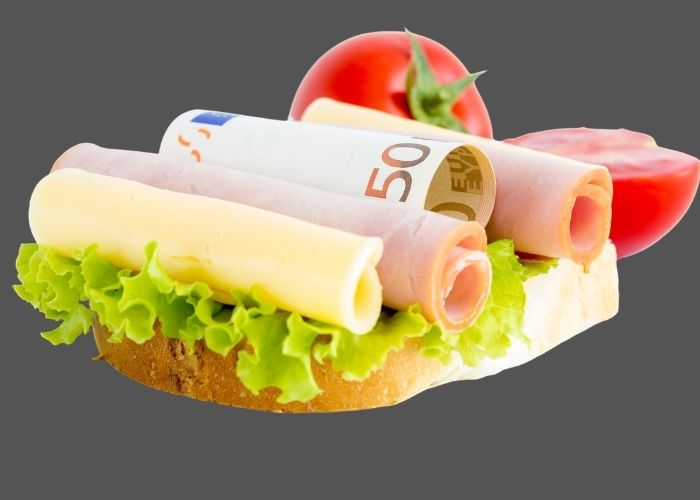More than six million people in Spain suffer from food poverty. About 13.3% of households do not have adequate nutrition. This is both in quantity and quality, simply because they do not have sufficient resources. This is one of the conclusions of a study conducted by the University of Barcelona (UB).
The findings of the study were presented in Madrid on Thursday. For the study, 1,300 telephone surveys were conducted under the direction of Ana Moragues-Faus, PhD, in Agricultural and Food Economics at the Faculty of Economics and Business Administration. The study also shows that 10.7% of the population receives help to feed themselves. This comes from family members, for example, through government services, grants or food vouchers, or from social organisations.
Public agenda
Moragues points out that this is a ‘pilot study’ – conducted both before and during the pandemic – on a phenomenon about which data is available in other countries. The aim is to ‘put the issue of the right to food on the Spanish public agenda’. Food poverty was ignored in Spain’.
This small sample size of the study was evenly distributed across the autonomous communities. Therefore, the results cannot yet be analysed on a community-by-community basis; a more extensive analysis is required for this.
Population of Valencia and Balearic Islands
In order to understand how many people are involved, Moragues stresses that “13.3% of Spanish households correspond to the entire population of the Valencian Community and the Balearic Islands combined. She adds that for 5.2% of households (2.4 million people), it was fairly or very uncertain whether they would have the required amount of food. This means that they had to limit their food intake due to a lack of resources. Since the start of the pandemic, this uncertainty has increased from 0.8% of households to 1.9%.
Structural problem
The study also shows that food poverty has been exacerbated by the pandemic. ‘But the difference is small, showing that there is a structural problem’. The number of households suffering from food insecurity rose from 11.9% to 13.3%. This was a result of the pandemic, meaning an increase of 656,418 people. These are often families with lower incomes or without a fixed income who are struggling to make ends meet. But it also occurs in the middle class. For example due to the presence of someone with a chronic illness, disability, or overweight within a household.
Right to food
Moragues urges the Spanish authorities to ‘guarantee the right to food and meet the Sustainable Development Goal of ‘zero hunger’. To do this, ‘it is necessary to include the measurement of food insecurity levels in national statistics. And to monitor the state of the right to sustainable food and promote solutions to the problem’.
Food insecurity
The FAO, the United Nations Food and Agriculture Organisation, ‘defines food insecurity as the absence of regular access to the necessary amount of safe and nutritious food to ensure people’s normal growth and development so that they can lead active and healthy lives’. The Food Insecurity Experience Scale (FIES) is used to measure food insecurity. This is an experience-based measure of the severity of food insecurity, based on people’s direct responses to questions about whether or not they have access to enough food.
Situation worsened
The FAO’s annual report indicates that between 2017 and 2019, there will be four million people in Spain experiencing moderate or mild food insecurity’. The difference with the six million in the recent UB study is due to the fact that the study is more up-to-date, includes severe food insecurity and the FAO report only covered adults, Moragues said.
Meat or meat substitute as indicator
In Spain, the Spanish statistical office INE includes in its Living Conditions Survey an indicator of consumption of meat or similar items as one of the eight elements to be measured to quantify when a person is in a situation of shortage. The latest data show that 3.8% of the population in 2019 and 5.4% in 2020 could not afford to eat meat, chicken, fish, or the equivalent for vegetarians at least every other day.
It also revealed that 2.6% of the Spanish population is hungry or has suffered from frequent hunger in recent years. And, moreover, 8.3% cannot afford an adequate diet. However, experts are happy that the problem of food insecurity in Spain is now on the table. It is a first step towards recognising that Spain has a problem of food insecurity that calls for measures ‘to ensure the right to food. For food is a common good, it is linked to community, culture, the transfer of knowledge between generations, cultures, and territories.
Related post: Spain invests to help fight child poverty


